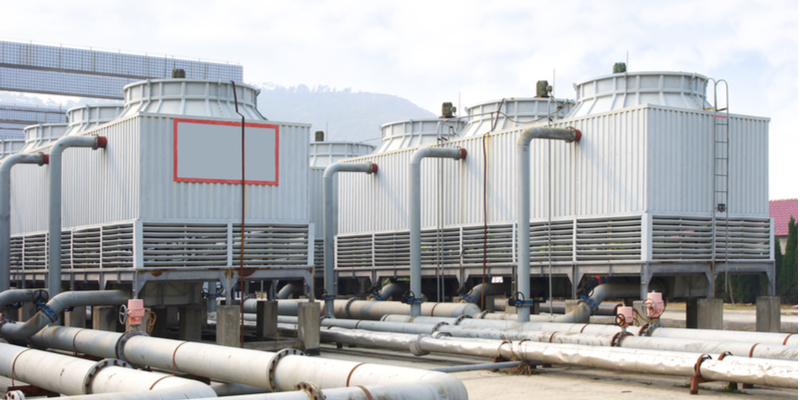The most commonly used supplemental cooling system for commercial applications is a spot cooler, either air-cooled or water-cooled.
Supplemental cooling differs from primary cooling solutions in that it is a secondary system that is used in conjunction with a primary system – such as a central AC unit and a portable spot cooler. The central AC unit would be the primary cooling solution, while the spot cooler serves as the supplemental cooling method.
When Do You Need Supplemental Cooling?
Supplemental cooling is commonly used for a variety of reasons, including:
- You have different cooling requirements for certain parts of your building. Say for instance, you have a server room with additional cooling needs.
- There are hot pockets throughout the building that do not get cool enough from the primary cooling system.
- Your central HVAC unit is not large enough to properly accommodate your entire building or space.
- In emergency situations when the primary cooling method goes off the grid or breaks.
Most Common Type of Supplemental Cooling: Spot Coolers
Spot coolers are the most commonly used type of supplemental cooling because they offer a great deal of benefits, are easy to set up and can serve both short term and long-term purposes.
Temporary spot coolers can be moved around as needed and provide adequate cooling to a variety of spaces. From smaller spaces that do not need an HVAC unit, to areas of a building that get much hotter and require additional cooling, there are many applications for these handy units.
The latest spot coolers are quite with a sound level of 55 dB(A), which makes these units ideal for office settings where loud noises will only serve as a distraction to busy workers. Plus, they are easy to install and require no special training to hook up or operate.
Air-Cooled Vs. Water-Cooled Spot Coolers
There are two main options when to comes to spot coolers: air cooled and water-cooled units.
Air-cooled units are more portable because they do not require as much equipment as a water-cooled unit. As their name suggests, an air-cooled unit draws in warm air and runs it over coils that cool off the air before recirculating it through the room.
A water-cooled unit draws in air and then uses water to cool it off, and so it must be connected to a water source. In addition, a water-cooled unit requires a drain. In some cases, a space may not be set up to accommodate this, in which case an air-cooled spot cooler may be the best option.
Although, air-cooled spot coolers work best in areas that do not typically exceed 100 °F. That’s because they do not provide the same level of cooling power as a water-cooled system – although they still get the job done for areas that do not reach as high of temperatures.
Other Types of Supplemental Cooling Systems
There are other types of supplemental cooling systems, including:
- Window air conditioners
- Through-the-wall air conditioners
- Ductless mini-split air conditioners
- Packaged terminal air conditioners
The Best Supplemental Cooling Option for Commercial Applications
Water-cooled or air-cooled spot coolers remain the leading choice for warehouses, office buildings, and other commercial applications. They are effective, easy to install, and you have the option to rent or buy a variety of units from Cooling Power. We offer a wide selection of units with something for every niche and need. Contact us today to learn more.

